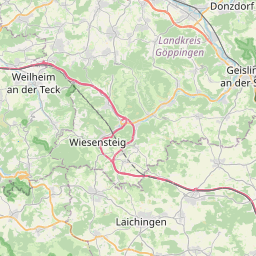






Description: Das Projekt "Development of a high throughput genomics-based test for assessing genotoxic and carcinogenic properties of chemical compounds in vitro (CARCINOGENOMICS)" wird/wurde gefördert durch: Kommission der Europäischen Gemeinschaften Brüssel. Es wird/wurde ausgeführt durch: European Bioinformatics Institute (EBI), Microarray Informatics Team.The major aim of CARCINOGENOMICS is to develop in vitro methods for assessing the carcinogenic potential of compounds, as an alternative to current rodent bioassays for genotoxicity and carcinogenicity. The major goal is to develop a battery of mechanism-based in vitro tests accounting for various modes of carcinogenic action. These tests will be designed to cover major target organs for carcinogenic action e.g. the liver, the lung, and the kidney. The novel assays will be based on the application of 'omics' technologies (i.e. genome-wide transcriptomics as well as metabonomics) to robust in vitro systems (rat/human), thereby also exploring stem cell technology, to generate 'omic' responses from a well-defined set of model compounds causing genotoxicity and carcinogenicity. Phenotypic markers for genotoxic and carcinogenic events will be assessed for the purpose of anchoring gene expression modulations, metabolic profiles and mechanism pathways. Through extensive biostatistics, literature mining, and analysis of molecular-expression datasets, differential genetic pathways will be identified capable of predicting mechanisms of chemical carcinogenesis in vivo. Furthermore, generated transcriptomic and metabonomic data will be integrated into a holistic understanding of systems biology, and applied to build an iterative in silico model of chemical carcinogenesis. Subsequently, predictive gene expression profiles, typically consisting of some 150-250 genes, will be loaded onto high throughput dedicated DNA-chips, thus accelerating the analysis of transcriptomic responses by a factor of 100. It is expected that the outcome of this project will generate a platform enabling the investigation of large numbers of compounds for their genotoxic and carcinogenic potential, as envisaged under the REACH initiative. This will contribute to speeding the identification of potential harmful substances to man, while lowering costs and reducing animal tests. Prime Contractor: Maastricht, University, Health Risk Analysis and Toxicology (Grat); Maastricht, Nederland.
SupportProgram
Origins: /Bund/UBA/UFORDAT
Tags: Gen ? Nagetier ? Baumstamm ? Genom ? Gesundheitsgefährdung ? Kanzerogenität ? Brunnen ? Arzneimittel ? Buchhaltung ? DNA ? Genetik ? Karzinogenese ? Tracer ? Batterie ? Biologie ? Genotoxizität ? Niere ? Ratte ? Übriger Bergbau ? Versuchstier ? Daten ? Vermeidung von Tierversuchen ? Biotechnologie ? Biotest ? Chemikalien ? Rechtsverfahren ? Lunge ? Mensch ? Risikoanalyse ? Technik ? Tierversuch ? Toxikologie ? Zelle ? Chemische Verbindung ? Chemische Stoffeigenschaft ? REACH ? Abdeckung ? Gesundheit ? Organ ? Risiko ? Planung ? Schadstoff ? Kosten ? Chemischer Stoff ? POTENZIAL ? ZWECKBESTIMMUNG ? UNTER ? FAEHIG ? UNTERSUCHUNG ? ANGEWANDT ? Genexpression ? LITERATUR ? Life Sciences ? MECHANISMEN ? VERANTWORTUNG ? VERBINDUNG ? Verwertung ? NEU ? FP6-LIFESCIHEALTH ? Vorgang ? DATENSATZ ? PFAD ? Bahnsteig ? PROJEKT ? ENTWICKLUNG ? GANZHEITLICH ? Rost ?
Region: Baden-Württemberg
Bounding boxes: 9° .. 9° x 48.5° .. 48.5°
License: cc-by-nc-nd/4.0
Language: Englisch/English
Time ranges: 2006-11-01 - 2011-10-31
Accessed 1 times.